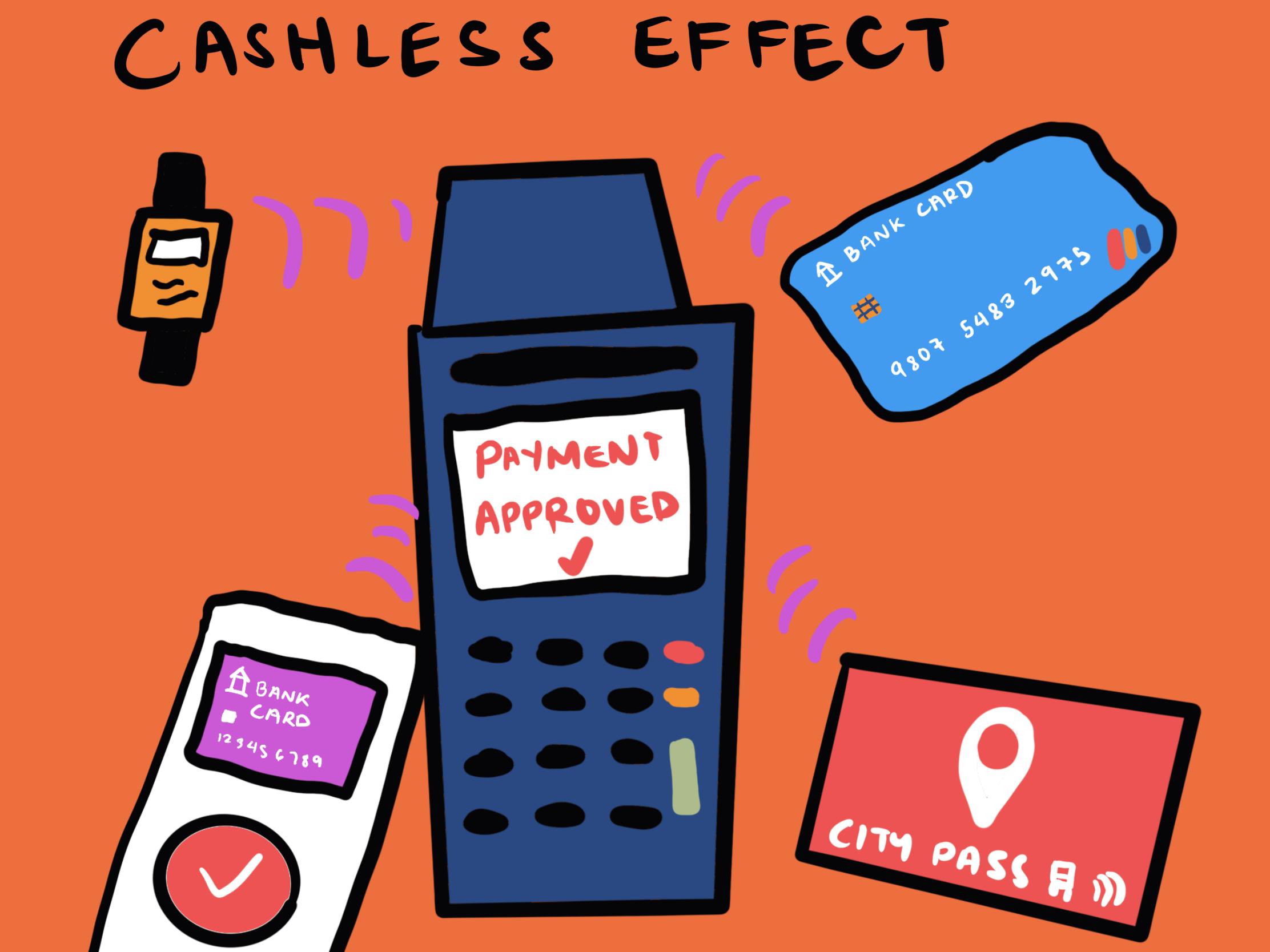Why does paying without physical cash increase the likelihood that we purchase something?
Cashless Effect
, explained.What is the Cashless Effect?
The cashless effect describes our tendency to be more willing to pay when there is no physical money involved in a transaction. It means that we are more likely to go through with a purchase if we are using a credit card or some other cash-free payment method.1

Where this bias occurs
Imagine you’re standing in the electronics section at Best Buy, eyeing a sleek new TV. It’s exactly what you’ve been looking for, but the price tag feels hefty—it’s a big financial commitment. Thinking about the actual amount of cash you’re about to fork over may dissuade you from going through with the purchase altogether. That visceral connection to parting with your money creates a moment of hesitation.
But here’s where the cashless effect comes into play. With a simple tap of your credit card or e-payment app, the transaction suddenly feels less painful. In this situation, the classic phrase “out of sight, out of mind” is all too real—you’re not seeing or holding the money, so the emotional weight of spending is significantly reduced. It feels easier, smoother, and far less stressful. This phenomenon has also been referred to as the ‘credit card’ effect. Studies have shown that when we’re making transactions for high value items, our ‘willingness-to-pay’ (the maximum amount a person is happy to pay for an item or service) often increases when we’re instructed to pay by credit card rather than cash.22
There’s more to this phenomenon. First, the rise of e-payment and credit cards has made cash transactions less common—and many believe that carrying physical money around is somewhat of a safety hazard. Paying electronically feels more abstract, even when we are spending money that we don’t exactly have in the bank. Second, physically parting with cash triggers a psychological response—where we feel the pain of spending significantly more. The absence of physical notes and coins disrupts the mental connection between money spent and the value of that money. Credit card payments and digital payments are also much faster, reducing the amount of time we have to reconsider a purchase that might be over our budget. Without that immediate friction, you’re far more likely to say yes to the purchase—and worry about the consequences later.














